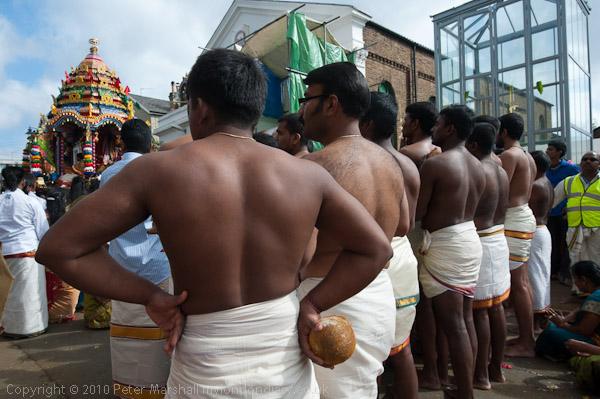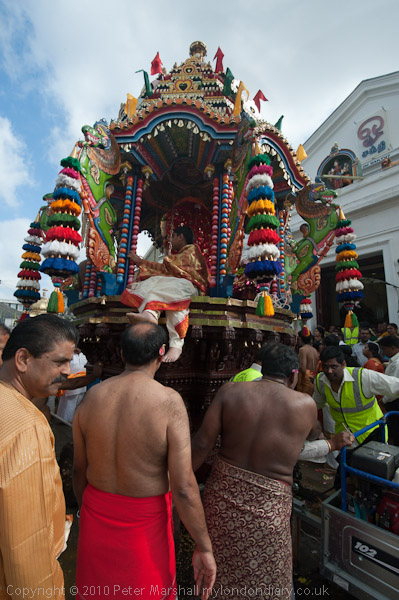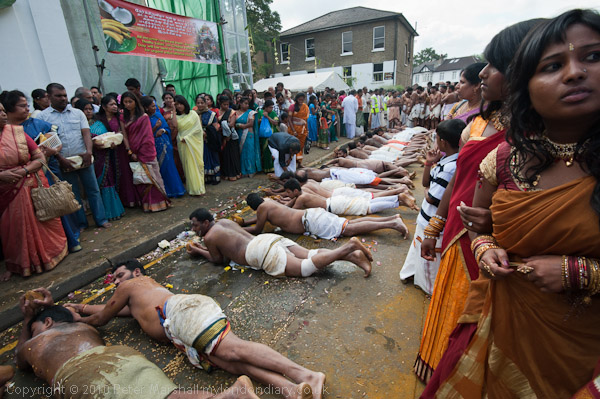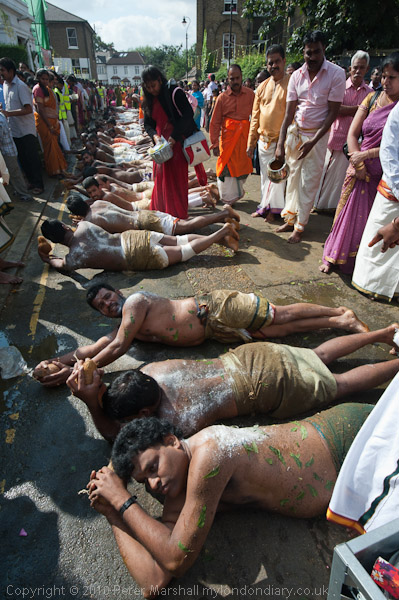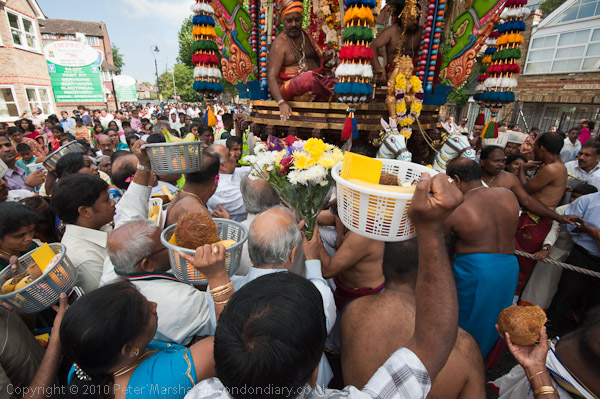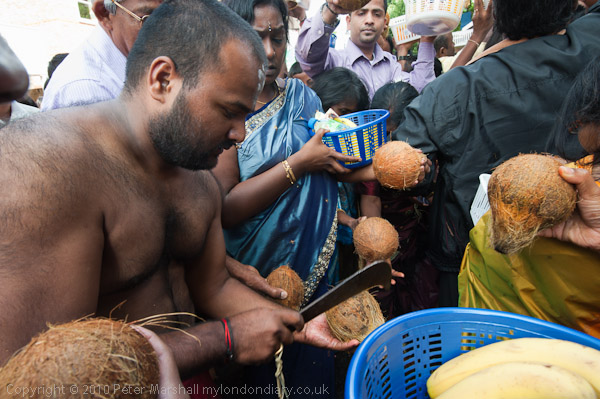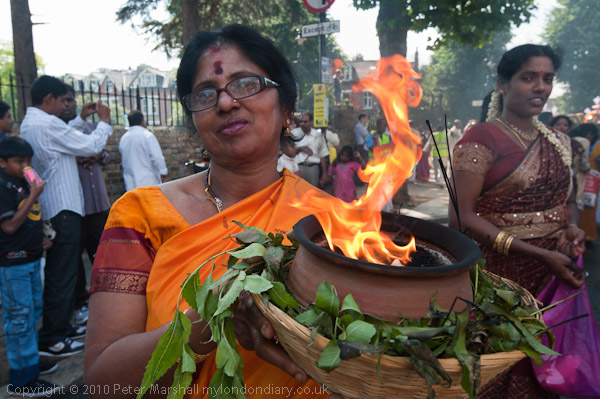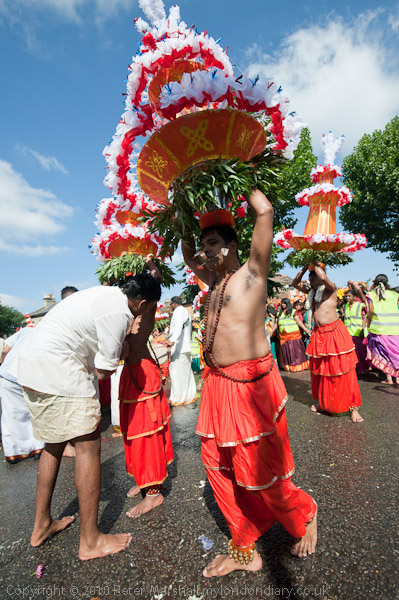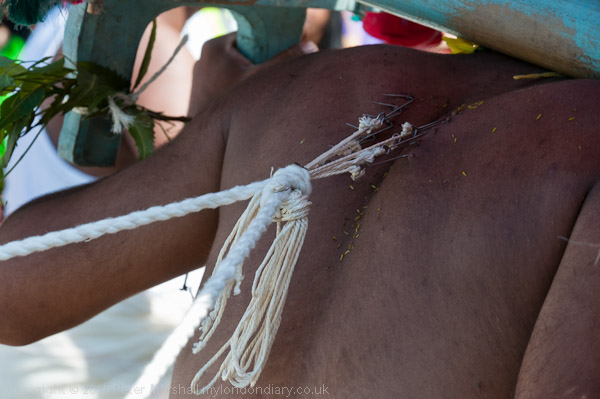Highgate Hill Murugan Chariot Festival: Back in the first decade of this century my work covered a wider range of cultural events than now, including many religious events on the streets of London. The 2010 election which put into power a Tory-led government dedicated to making the poor poorer and themselves and their friends richer changed that for me, leading to 14 years dominated by covering protests – something which had only been one strand of my work before. I’m currently not sure if our recent election will change my work which for the last months has been completely dominated by Palestine.
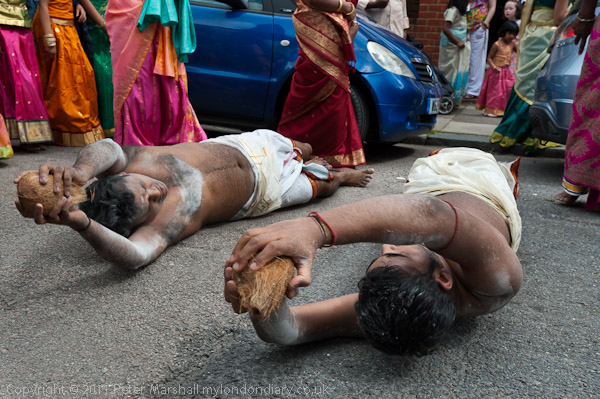
I didn’t entirely stop photographing religious festivals and on Sunday 10th July 2011 went to Highgate where the annual Highgate Hill Murugan Chariot Festival was taking place.
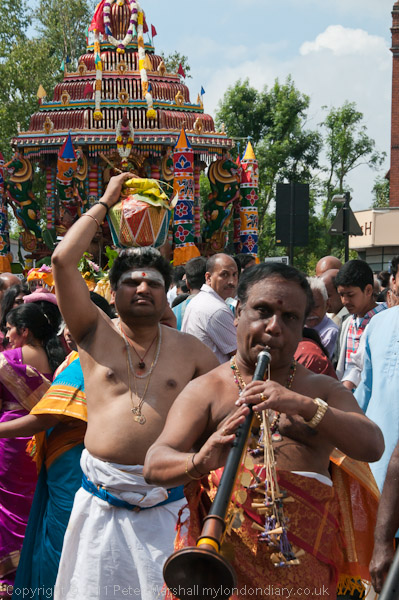
Here I’ll copy what I wrote about it in 2011 with a few of the many pictures I made at the event. You can see more pictures on My London Diary.
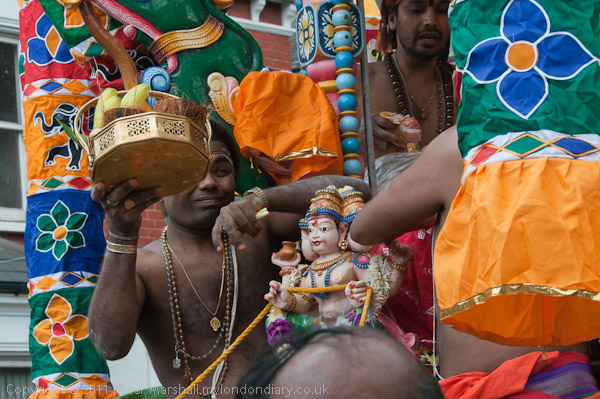
Murugan is a popular Hindu God in Tamil areas and the patronal god of the Tamil homeland Tamil Nadu. As God of war Murugan with six heads has a divine lance and other weapons and rides a peacock.
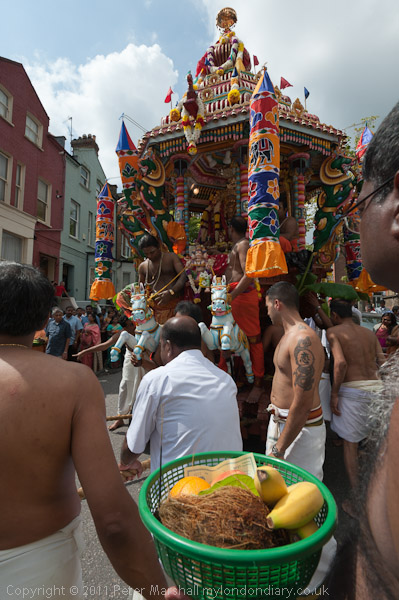
In the Chariot Festival people make offerings to Murugan of baskets of fruits, particularly coconuts, which are blessed and returned.

Men on one side and women on the other pull on the long ropes to take the chariot around the neighbourhood, while a conch shell gives an audible warning of its movement; other women carry kavadi (burdens) offered to Murugan, chanting and carrying of pots, possibly of coconut milk on their heads.
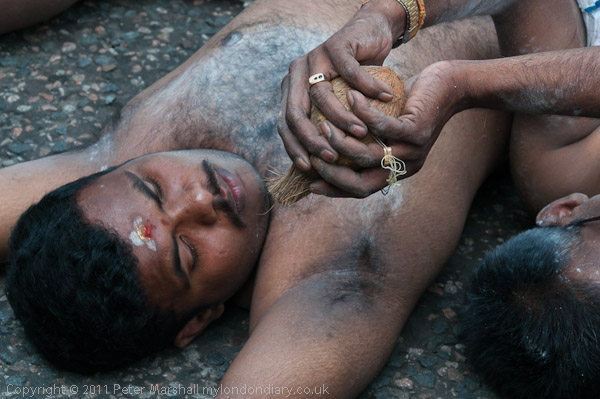
Some men roll half-naked along the ground behind the chariot holding coconuts. People sweep the road to make their progress less painful, and others anoint them with sacred ashes.
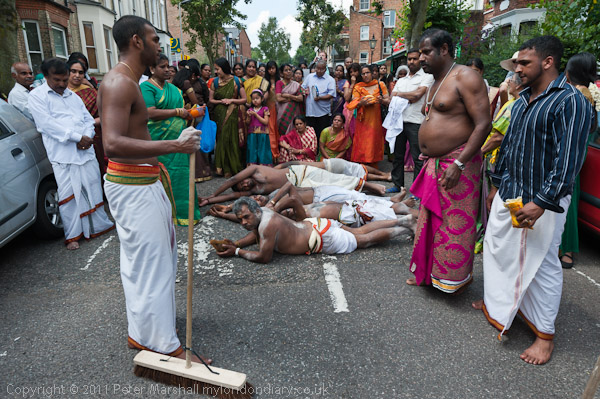
Highgate Hill Murugan Temple is one of the oldest and most famous in the UK, but the celebrations here seemed to be a little more restrained than those I’ve photographed at some other London Murugan temples.

Perhaps surprisingly, in Sri Lanka Murugan is also revered by Sinhalese Buddhists.

On the ‘History‘ page of the Highgatehill Murugan Temple web site you can read how the Hindu association of Great Britain was founded in London on 23rd October 1966, and in 1977 was able to buy a spacious freehold property at 200A, Archway Road, Highgate Hill. Here they built the Temple which includes a library, two Concert Halls, a prayer hall and a Priest’s flat which was opened in 1979, with a three storey Temple added a few years later. It was the first Sri Llankan Hindu Temple in the UK.
More Pictures: Highgate Hill Murugan Chariot Festival
Flickr – Facebook – My London Diary – Hull Photos – Lea Valley – Paris
London’s Industrial Heritage – London Photos
All photographs on this page are copyright © Peter Marshall.
Contact me to buy prints or licence to reproduce.
